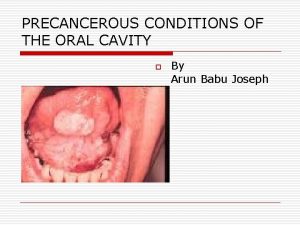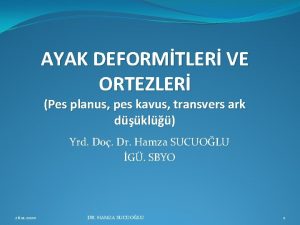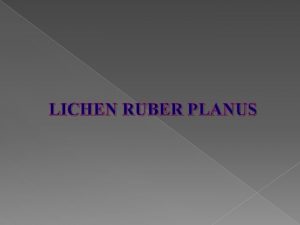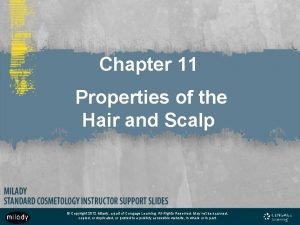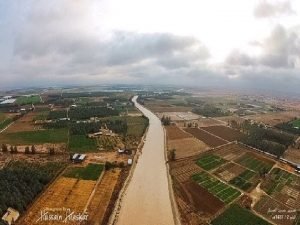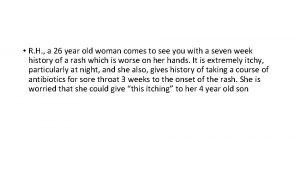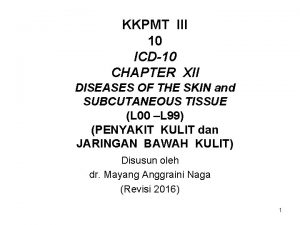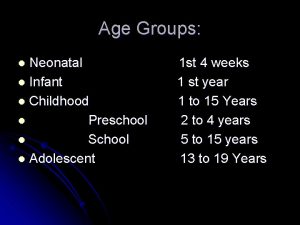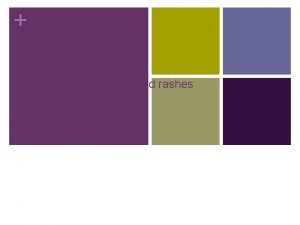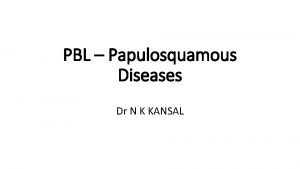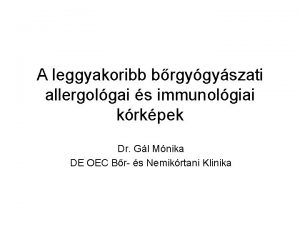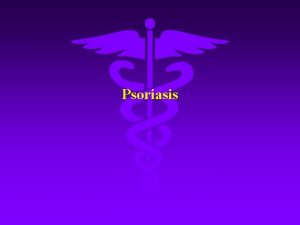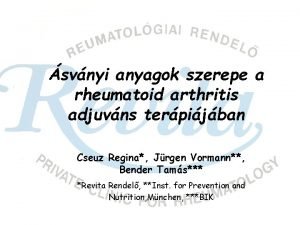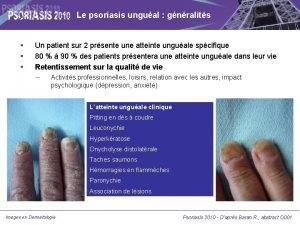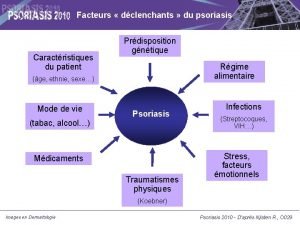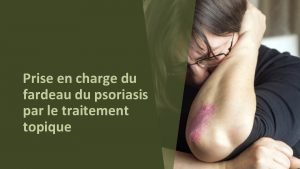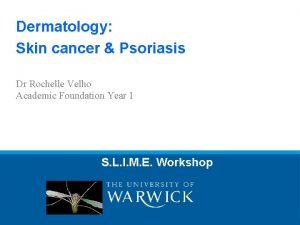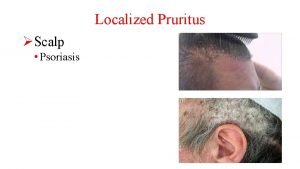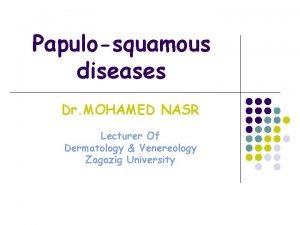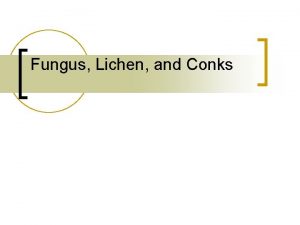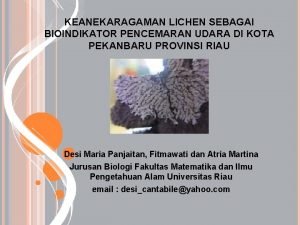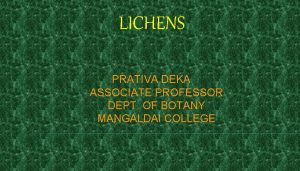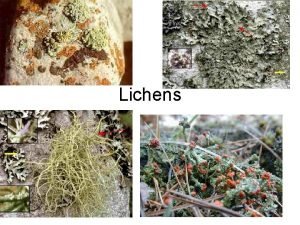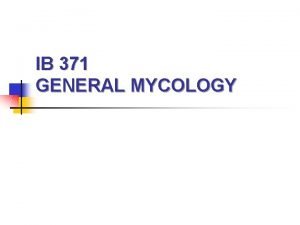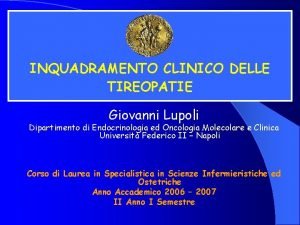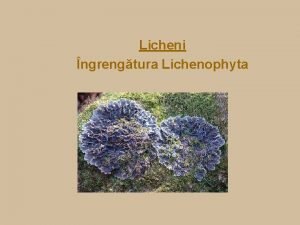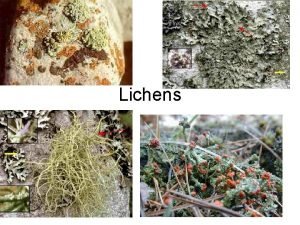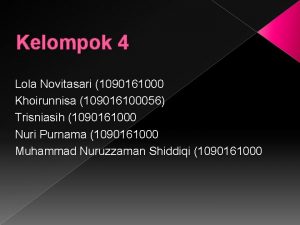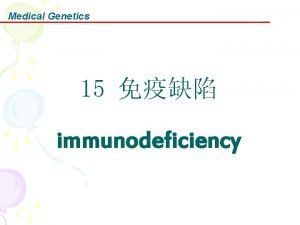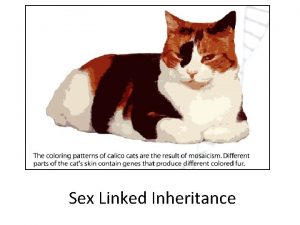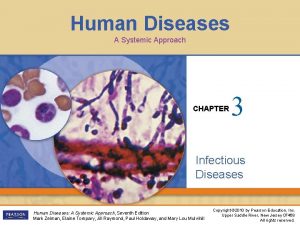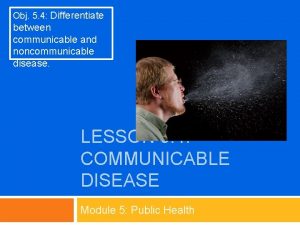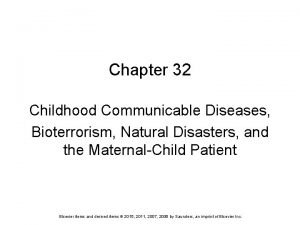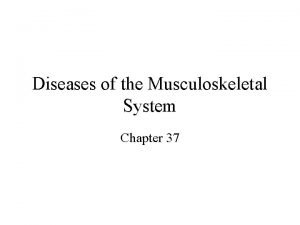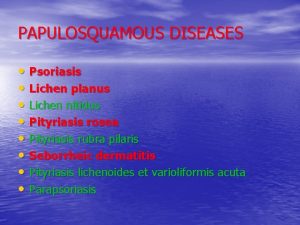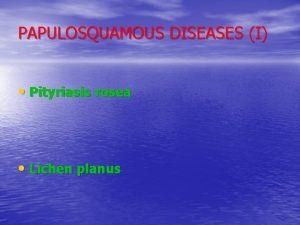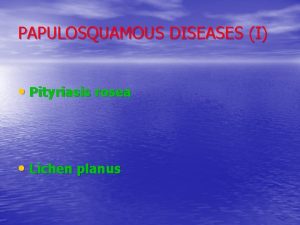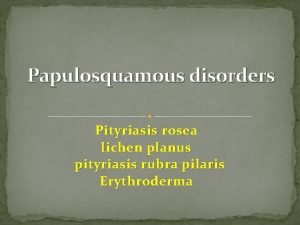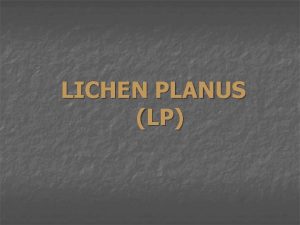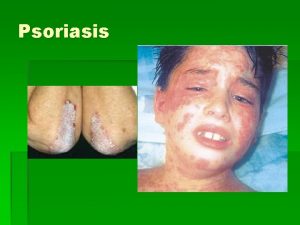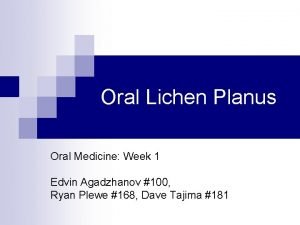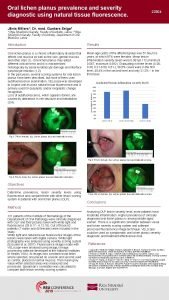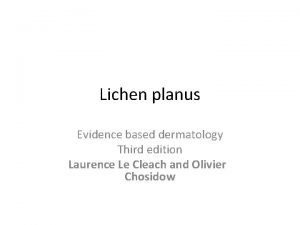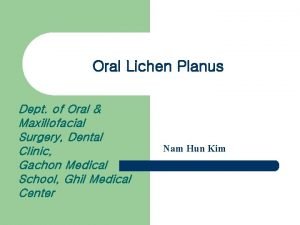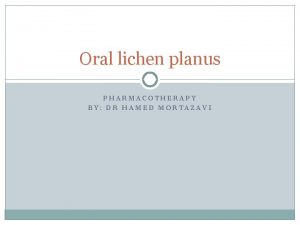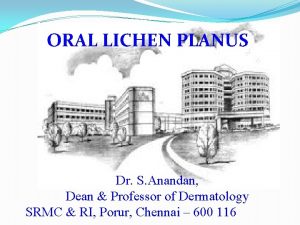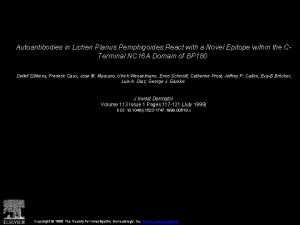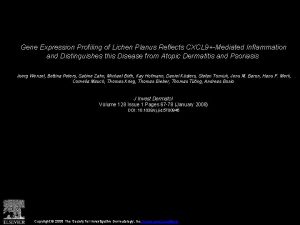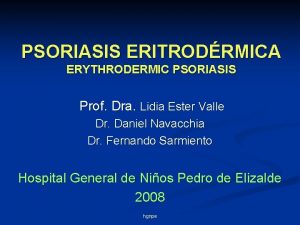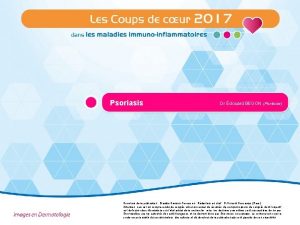PAPULOSQUAMOUS DISEASES Psoriasis Lichen planus Lichen nitidus Pityriasis






































































- Slides: 70

PAPULOSQUAMOUS DISEASES • Psoriasis • Lichen planus • Lichen nitidus • Pityriasis rosea • Pityriasis rubra pilaris • Seborrheic dermatitis • Pityriasis lichenoides et varioliformis acuta • Parapsoriasis

PAPULOSQUAMOUS DISEASES (II) • Psoriasis • Seborrheic dermatitis

PSORIASIS Psoriasis is a common, genetically determined, inflammatory and hyperproliferative skin disease. Psoriasis is a hereditary disorder of skin with several clinical expressions. The most frequent type is psoriasis vulgaris, which occurs as chronic, recurring, scaling papules and plaques.

CLASSIFICATION • Psoriasis vulgaris – Acute guttate – Chronic plaque – Inverse – Palmoplantar • Psoriatic erythroderma • Pustular psoriasis • Psoriatic arthritis


PSORIASIS VULGARIS

Epidemiology • Age of onset: May begin at any age. Uncommon < 10 years. Early: • • • Peak incidence at 22. 5 years of age (in children the mean age of onset is 8 years). Late: About age 55. Sex: Equal incidence. Race: Low incidence in West Africans, Japanese; very low incidence or absence in North and South American Indians. Heredity: Polygenic trait. HLA-B 13, B 17, Bw 57, HLA-Cw 6 ( aerlier age of onset and with a positive family history) Triggering Factors: Physical trauma (Koebner’s phenomenon), infections (acute streptococcal), stress, drugs ( glucocorticoids, lithium, antimalarials, interferon, beta-adrenergic blockers), heavy alcohol, smoking Comorbid disease: Psoriatic arthritis, Crohn’s disease, cancer, depression, non-alcoholic fatty liver disease, metabolic syndrome (or components of it), cardiovascular disorders.

Pathogenesis • A chronic inflammatory disorder with polygenic predisposition combined with • • triggering environmental factors such as trauma, infection, or medication. Psoriasis is a T-lymphocyte-mediated autoimmune disease (mixed Th 1 and Th 17 disease). T cells and cytokines play a pivotale role ( overexpression of type 1 cytokines like IL-1, IL-6, IL-8, IL-12, IFN gamma and TNF alpha ) The underlying pathophysiology involves epidermal proliferation and differentiation, angiogenesis and the cellular immune system. Dysregulated interactions of innate and adaptive components of the immune system with resident cutaneous cell types. 1) Cross-talk between innate (macrophages, mast cells, granulocytes) and adaptive immunity( Tcells) 2) Interleukin-23 / Th 17 axis 3) Effect on resident T cells of the skin (antimicrobial peptides, cytokines and chemokines secreted by keratinocytes act as chemoattractants for infiltrating immune cells) 4)Effect on vascular endothelial cells ( the inflammatory milieu leads to induction and activation of a range of pro-angiogenic factors – VEGF - , TNF alpha-governed proinflammatory environment in psoriatic skin induces endothelial adhesion molecules which facilitate the recruitement of circulating leucocytes in psoriatic skin.




Physical • Acuteexamination Guttate Type: Eruption of small salmon-pink • • papules (guttate: Latin gutta, “drop”), with or without scales, disseminated, generalized, mainly on the upper trunk, strongly associated with streptococcal throat infection, frequent in young adults and children Chronic Stable (plaque) Type: Sharply marginated, dull-red plaques with loosely adherent, lamelar, silvery-white scales. Single lesion or lesions localized to one or more predilection sites: elbows, knees, sacral-gluteal region, scalp, plm/soles. Sometimes only regional involvement(scalp), often generalized. Special Sites – Palms and Soles – Scalp – Inverse Psoriasis (perianal, genital and body folds) – Nails: pitting, subungual hyperkeratosis, onycholysis, the oil spot (pathognomonic)

Laboratory examinations • Dermatopathology • Culture: Throat culture

Palmoplantar psoriasis • Chronic, relapsing eruption limited to palms and soles. • • • Numerous very typical sterile, yellow, deep-seated pustules that evolve into dusky-red crusts. Incidence: Low as compared to psoriasis vulgaris Age of onset: 50 to 60 years. More common in females (4: 1) Symptoms: Stinging, burning, itching. Eruptions come and go, in waves. Differential diagnosis: Tinea manus, tinea pedis, dyshidrotic eczema, contact dermatitis, HSV infection. Course: Persistent for years and characterized by unexplained remissions and exacerbations.

Generalized acute pustular psoriasis (Von Zumbusch) • This disorder can be a life-threatening medical • problem with an abrupt onset. It starts with a burning fiery-red diffuse erythema that spreads in hours with pinpoint pustules appearing in clusters. Fever, weakness, severe malaise, fast pulse, leukocytosis, shedding of nails, hair loss, skin tenderness Special types: Impetigo herpetiformis, acrodermatitis continua of Hallopeau

Psoriatic arthritis • • Rare before age 20 Sero(-), “distal”, asymmetric oligoarthritis Mutilating arthritis (bone erosion, osteolysis or ankylosis. “Axial” (sacroiliac, hip, cervical) Dactylitis (sausage fingers) May be present (in 10% of patients) without any visible psoriasis Often psoriatic involvement of fingertips and periungual skin Massive nail involvement by psoriasis is frequent

777


Management (1) • Factors influencing selection of treatment: – Age – Type of psoriasis – Site and extent of involvement – Previous treatment – Associated medical disorders

Management (2) • Localized psoriasis – – – – – Topical glucocorticoids Intralesional triamcinolone acetonide Topical anthralin Topical vitamin D analogues( calcipotriene, 0. 005%, ointment and cream) Topical tacrolimus, 0. 1% Tazarotene ( a topical retinoid, 0. 05 and 0. 1% gel ) Topical dithranol and coal tar Topical PUVA, UVB Salicylic acid Moisturizing

Management (3) • Generalized psoriasis – – – – Narrow-Band UVB Phototherapy Oral PUVA Photochemotherapy Oral Retinoids Methotrexate Cyclosporine Diet Monoclonal Antibodies and Fusion Proteins: Infliximab, Etanercept, Adalimumab, Ustekinumab (IL 12/23)


q. GEOGRAPHIC TONGUE Also known as benign migratory glossitis The condition usually presents as asymptomatic erythematous patches with serpiginous borders, resembling a map. These lesions characteristically have a migratory nature.


RELATED PHYSICAL FINDINGS q. NAIL CHANGES IN PSORIASIS.



Ø Generalized Pustular Psoriasis § is a distinctive characterized by acute variant of psoriasis. Attacks are fever that lasts several days and a sudden generalized eruption of sterile pustules 2– 3 mm in diameter. § The pustules are disseminated over the trunk and extremities, including the nail beds, palms, and soles. § The pustules usually arise on highly erythematous skin, first as patches and then becoming confluent as the disease becomes more severe.

ERYTHRODERMIC PSORIASIS • generalized form of the disease that affects all body sites, including the face, hands, feet, nails, trunk, and extremities • Erythema is the most prominent feature, and scaling is different • Instead of thick, adherent, white scale there is superficial scaling. • Psoriatic skin is often hypohidrotic due to occlusion of the sweat ducts


INVERSE (FLEXURAL) PSORIASIS • lesions may be localized in the major skin folds, such as the axillae, the genito-crural region, and the neck. • Scaling is usually minimal or absent, and the lesions show a glossy sharply demarcated erythema, which is often localized to areas of skin-to-skin contact. • Sweating is impaired in affected areas.




























SEBORRHEİC DERMATİTİS SD is a very common chronic dermatosis characterized by redness and scaling and occuring in regions where the sebaceous glands are most active, such as the face and scalp, the presternal area, and the body folds.

EPIDEMIOLOGY AND ETIOLOGY • Age of Onset: Infancy (within the first months), puberty, • • most between 20 and 50 years or older Infantile SD: Usually begins about one week after birth and may persist for several months Adult SD: Chronic relapsing course; dandruff ( pityriasis capitis simplex), non-purulent otitis externa, intertrigo Sex: More common in males Predisposing and Exacerbating Factors: Hereditary diathesis, parkinson’s disease, some neuroleptic drugs, emotional stress, HIV disease

PATHOGENESİS • 1) Immune responses to Malassezia furfur (P. ovale): Part of the • • normal resident skin flora. Studies on the cellular immunity have yielded contradictory results. The inflammation may be irritant ? caused by toxic metabolites, lipase and reactive oxygen species. 2) Active sebaceous glands: Often associated with sebum overproduction. 3) Abnormal composition of the skin surface lipids ( increased triglycerides and cholesterol, decreased squalene and FFA ) and imbalance of the microbial flora

HİSTORY AND SKİN LESİONS • Gradual onset • Seasonal variations: Worse in winter, sunlight ( dual effect) • Pruritus is variable, often increased by perspiration • Hairy areas of head, face, trunk, body folds, genitalia

COURSE AND PROGNOSIS • The condition improves in the summer and flares • • • in the fall. Recurrences and remissions Infantile and adolescent SD disappears with age. Differential diagnosis: Atopic dermatitis, irritant diaper dermatitis, psoriasis, langerhans-cell hystiocytosis, Leiners’ disease, Wiskott Aldrich syndrome

MANAGEMENT • This chronic disorder requires initial therapy • • • followed by chronic maintenance therapy Initial topical therapy: Glucocorticoid cream or lotion, ketoconazole cream, pimecrolimus cream, tacrolimus ointment, medicated shampoos (selenium sulfide, zinc pyrithione, ketoconazole, tar) Systemic therapy: Itraconazole, fluconazole Maintenance therapy






 Saw tooth appearance in lichen planus
Saw tooth appearance in lichen planus Polügonaalne
Polügonaalne Pes transverso planus
Pes transverso planus Liken planus
Liken planus Medial longitudinal ark takviyesi
Medial longitudinal ark takviyesi Richen luber planus
Richen luber planus Hanging curtain sign
Hanging curtain sign Anomalie du cuir chevelu
Anomalie du cuir chevelu Fragilitas crinium
Fragilitas crinium Pityriasis rosea differential
Pityriasis rosea differential Pityriasis ros
Pityriasis ros Pityriasis rosea
Pityriasis rosea Kode icd 10 telogen effluvium
Kode icd 10 telogen effluvium Pityriasis rosea liečba
Pityriasis rosea liečba Enophtalmus
Enophtalmus Morbilloform rash
Morbilloform rash Grattage test definition
Grattage test definition Morphea gyulladásos fázisa
Morphea gyulladásos fázisa Psoriasis
Psoriasis Psoriasis arthritis nhs
Psoriasis arthritis nhs Psoriasis ungual
Psoriasis ungual Rehaklinik psoriasis arthritis
Rehaklinik psoriasis arthritis Physiopathologie psoriasis
Physiopathologie psoriasis Anatomy and physiology of psoriasis
Anatomy and physiology of psoriasis Melanoma vs mole
Melanoma vs mole Crater
Crater Grattage test in psoriasis
Grattage test in psoriasis Fungi examples
Fungi examples Hydrarch and xerarch succession
Hydrarch and xerarch succession Symbiose exemple
Symbiose exemple Lichen myxedematosus
Lichen myxedematosus Lichen
Lichen Bartholin cyst treatment
Bartholin cyst treatment Lichens characteristics
Lichens characteristics Association lichen
Association lichen Squamous cell carcinoma
Squamous cell carcinoma Lichen as food
Lichen as food Oligomenorrea
Oligomenorrea Lichen sclerosus vulvare
Lichen sclerosus vulvare Lichen cross section
Lichen cross section Simbioza licheni
Simbioza licheni Lichen sclerosus vulvare
Lichen sclerosus vulvare Auricularia volvacea basidiospora
Auricularia volvacea basidiospora Zygomycota
Zygomycota Lichen structure
Lichen structure Lichen association
Lichen association Thalles
Thalles Anatomi lichen
Anatomi lichen What are lichen
What are lichen Nutritional diseases
Nutritional diseases Immunocompromised diseases list
Immunocompromised diseases list Whats a sex linked trait
Whats a sex linked trait Tronsmo plant pathology and plant diseases download
Tronsmo plant pathology and plant diseases download Chapter 22 genetics and genetically linked diseases
Chapter 22 genetics and genetically linked diseases Milady chapter 8 skin disorders and diseases
Milady chapter 8 skin disorders and diseases Human diseases a systemic approach
Human diseases a systemic approach Periradicular tissues
Periradicular tissues Chapter 8 cardiovascular system
Chapter 8 cardiovascular system Known as the fun uncle of the quality revolution
Known as the fun uncle of the quality revolution Certain infectious and parasitic diseases
Certain infectious and parasitic diseases Secondary immunodeficiency diseases
Secondary immunodeficiency diseases Emerging infectious diseases
Emerging infectious diseases Non communicable diseases
Non communicable diseases Venn diagram of communicable and non-communicable diseases
Venn diagram of communicable and non-communicable diseases Nail diseases and disorders milady
Nail diseases and disorders milady Venn diagram of communicable and non-communicable diseases
Venn diagram of communicable and non-communicable diseases Chapter 32 childhood communicable diseases bioterrorism
Chapter 32 childhood communicable diseases bioterrorism Diseases in civil war
Diseases in civil war Diseases of the musculoskeletal system
Diseases of the musculoskeletal system Major nutritional deficiency diseases in emergencies
Major nutritional deficiency diseases in emergencies Diseases spread by columbian exchange
Diseases spread by columbian exchange
